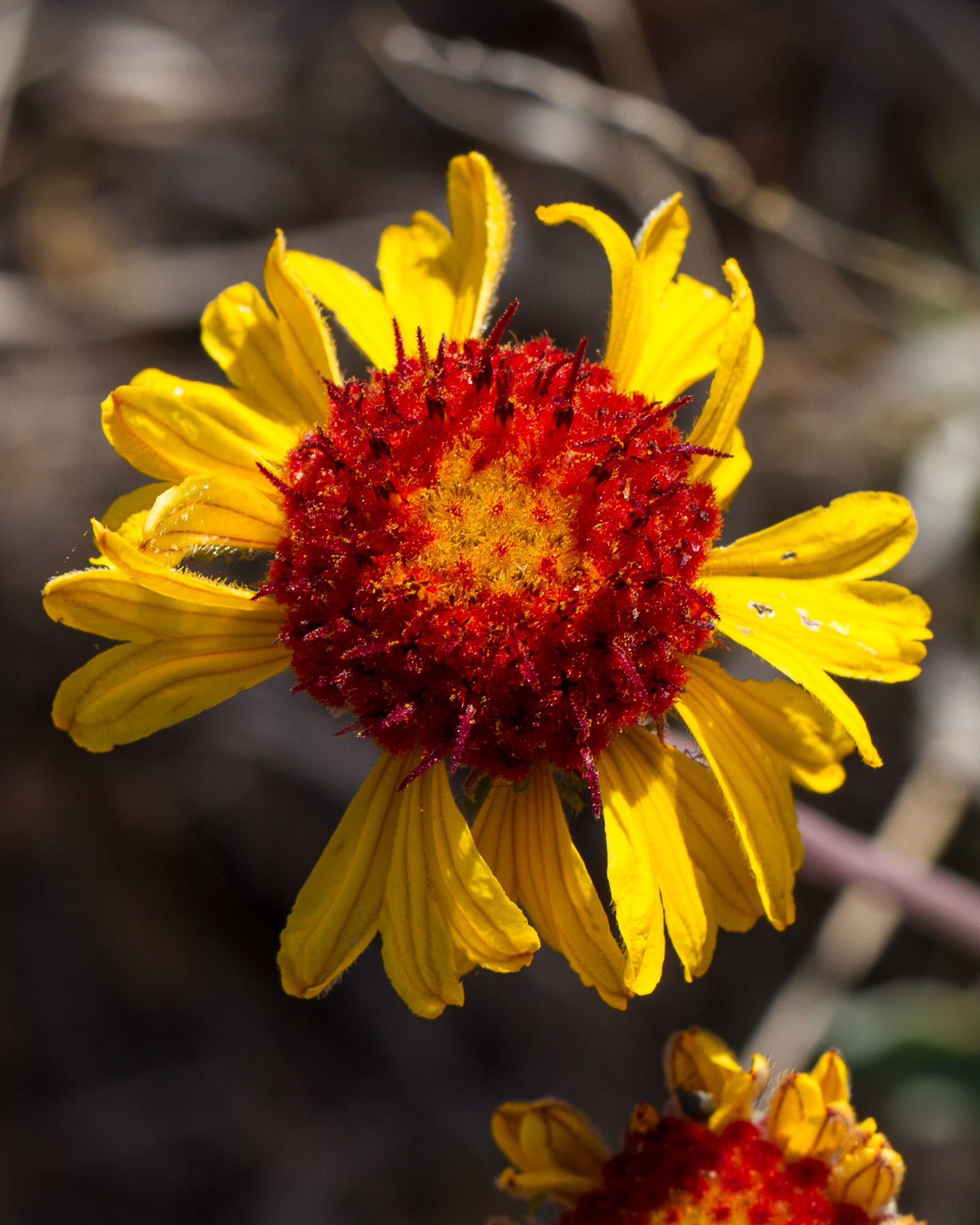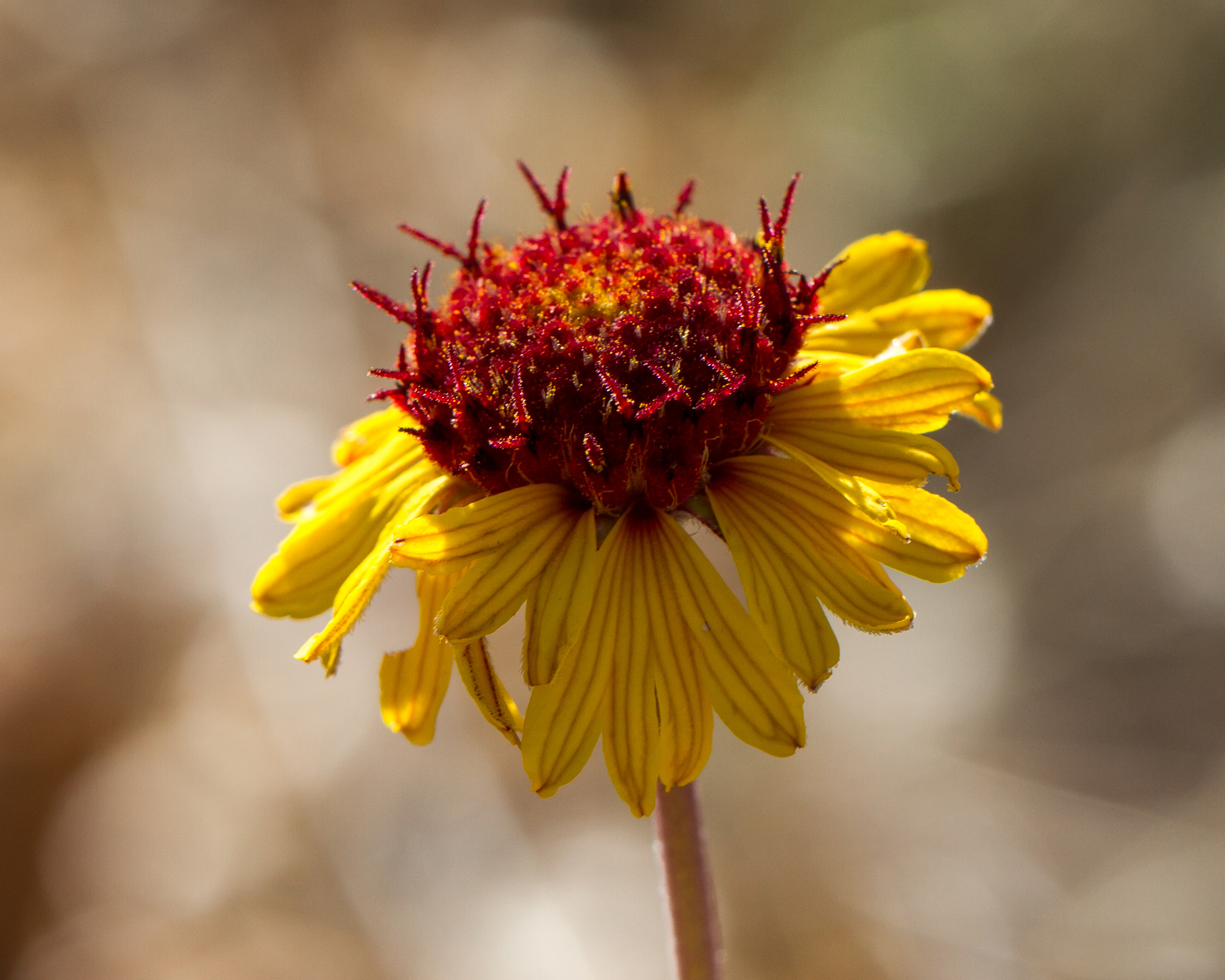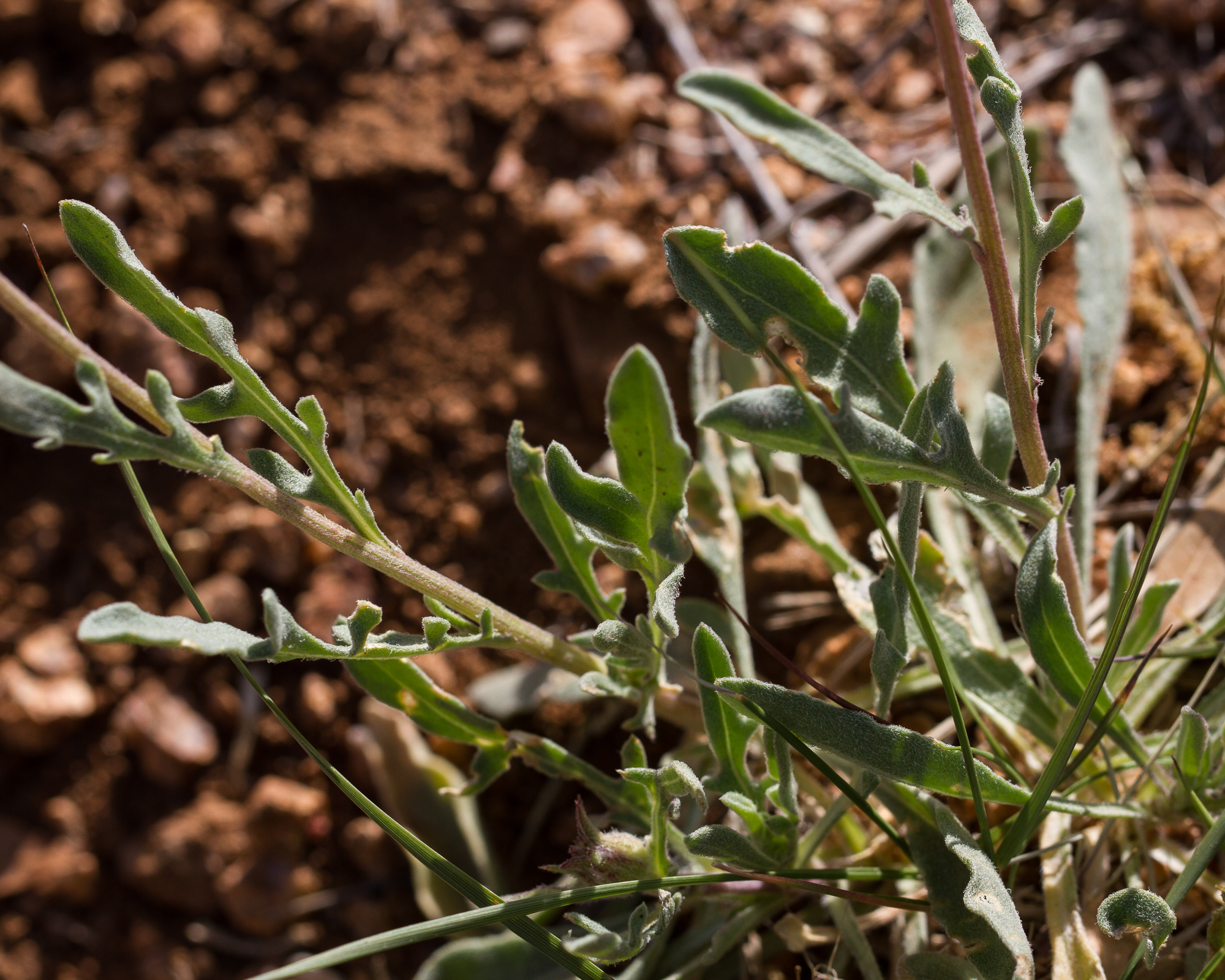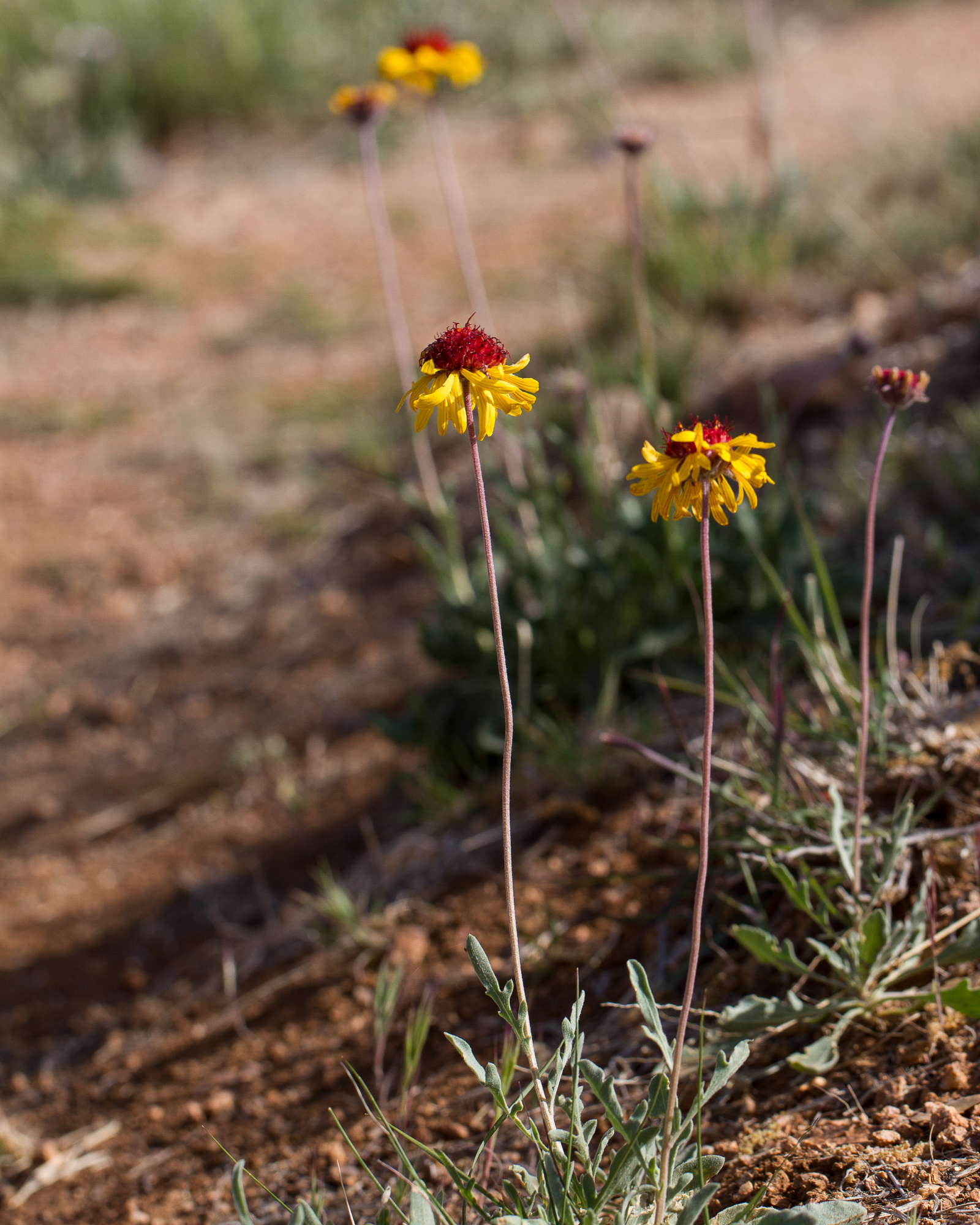Photo by Leslie Eguchi
 Photo by Leslie Eguchi
Photo by Leslie Eguchi
 Photo by Leslie Eguchi
Photo by Leslie Eguchi
 Photo by Leslie Eguchi
Photo by Leslie Eguchi

Wildflowers of Southern Arizona
Red Dome Blanketflower.
Gaillardia pinnatifida
Aster (Asteraceae) family.
Duration: Perennial. Nativity: Native. Lifeform: Subshrub. General: Perennial herbs to 35 cm tall, growing in dense tufts from a woody caudex, and sometimes from rhizomes; stems much-branched, leafy toward the base; herbage strigose-canescent to villous. Leaves: Alternate, clustered near base of plant; blades oblanceolate to spatulate, the lower leaves toothed or pinnately lobed and upper leaves entire and narrower; surfaces strigose-canescent to villous. Flowers: Flower heads showy, radiate, solitary on slender peduncles to 25 cm long; involucre (ring of bracts wrapped around flower head) hemispheric, 1-2 cm diameter, the bracts (phyllaries) 20-30 in �2-3 series, lanceolate-attenuate and villous with long white heairs; ray florets 0 or 5-14, the laminae (ray petals) yellow, often streaked with purple, deeply 3-lobed, 1-3 cm long; disc florets 60-100, the corollas yellowish with purple tips, densely glandular-hirsute, 0.5 cm high. Fruits: Achenes cone-shaped,to 3 mm long, densely silky hirsute, topped with a pappus of 5-10 dry, membranaceous paleae, these tipped with slender awns. Ecology: Often found on limestone soils on mesas, plains, and in open pine forest, from 3,500-7,000 ft (1067-2134 m); flowers April-October. Distribution: CO and UT to TX, NM and AZ; south to MEX. Notes: A distinctive, showy perennial herb with a large, roundish head of showy red-orange disc flowers surrounded by yellow rays, each with three lobes; the simple to pinnately lobed, gray-green leaves are mostly restricted to the lower portion of the plant and the seeds have a pappus of awn-tipped scales (palea). Ethnobotany: The plant was rubbed on mothers- breasts to wean infants; an infusion of the plant was used as a diuretic, to treat heartburn and nausea, and ceremonially; a poultice of the leaves was applied to treat gout, and the seeds were eaten as food. Etymology: Gaillardia is named for Gaillard de Charentonneau, an 18th century French patron of botany; pinnatifida means pinnately cut.
Santa Catalina Mountains
Oracle State Park
Location: Nature Loop Trail near parking area
4/16/17
See SEINet Pictures and Description
See FireFly Forest Pictures and Description


 Photo by Leslie Eguchi
Photo by Leslie Eguchi
 Photo by Leslie Eguchi
Photo by Leslie Eguchi
 Photo by Leslie Eguchi
Photo by Leslie Eguchi
